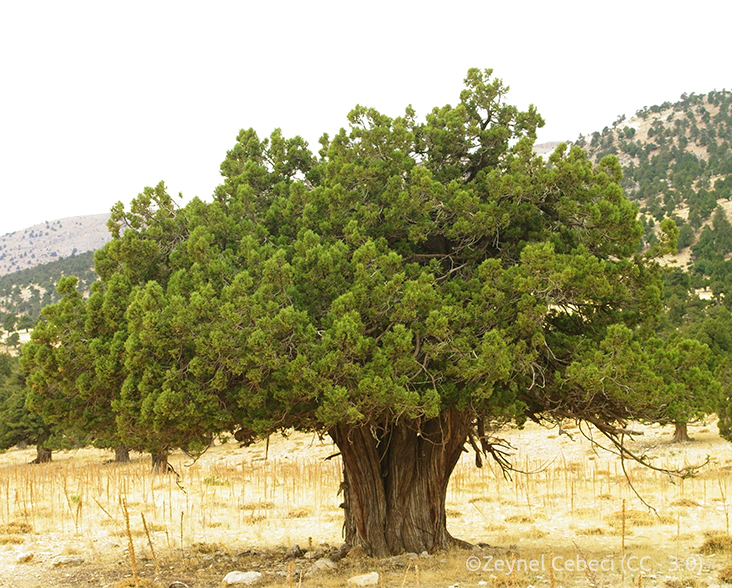Juniper
Species Data
Class: Pinopsida
Order: Pinales
Family: Cupressaceae
Scientific Name: Juniperus polycarpos
IUCN Red List status:Least Concern
Description
This evergreen shrub or tree grows primarily in the temperate biome, with a range from northeastern Turkey to Turkmenistan. Due to their ability to grow at higher altitudes, they are used for a variety of purposes ranging from timber to fuel wood.
Juniperus polycarpos is a species with two varieties, Juniperus polycarpos var. polycarpos and Juniperus polycarpos var. turcomanica. Some authorities have classified Juniperus polycarpos as a subspecies or variety of Juniperus excelsa (Greek Juniper).
Behaviour
Juniperus polycarpos grows both solitarily, and together with other juniper species, forming so-called juniper forests.


Habitat and range
The plant occupies a range of habitats including montane coniferous forests, to upper montane steppes. Its native range includes many countries across central, western, and southern Asia. It is found on calcareous as well as siliceous rocks, usually in shallow, stony soils, but sometimes in loess or loam, and on dry slopes or near intermittent streams.
Generally found at higher elevations in semi-arid environments, it has an altitude range between 1,000 and 3,950 metres above sea level. This makes them the principal or only trees that cover the higher altitude coniferous belt. At its highest altitudes in Afghanistan and Pakistan it forms very open stands on bare screen or glacial moraines.
Juniper forests suffer from a decline in many parts of the semiarid mountainous parts of western and central Asia due to land use changes and pressures. Whilst it is not in danger of extinction – to its enormous ranges and regional abundance – its depletion is considered an issue that demands preventive as well as restorative action.
